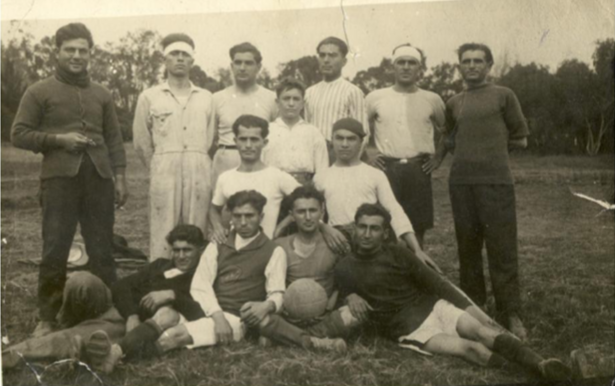
The Armenian Diaspora of Mexico
The story goes like this. The Armenian presence in Mexico was never as gargantuan as that of say Los Angeles or Buenos Aires. Nor was it as tight knit as Beirut. They never built massive churches or erected towering monuments, and their brethren from the motherland didn’t come in droves. But what they have historically lacked in institutional backing, they have made up for ten fold in kinship and stories.
What happens to a diaspora community when they don’t have designated spaces in which to gather? When there are no stately memorials to collectively grieve at or when their mother tongue is no longer recognizable to them? Is no longer their own? What, in other words, does it mean to be Armenian when so many of its markers are gone?

In 1632, Mexico welcomed its first Armenian migrant, the weaver of velvets Francisco Martin. But it wasn’t until after the Genocide that any semblance of a community began to take hold. It was a very short period of loose immigration policy, in fact, that made its existence possible. Inhospitable socio-political circumstances made it even more of a precious and anomalous artifact.

During Mexico’s colonial period, for instance, non-Catholics were prohibited from entering Spanish possessions in America. The dictatorship of Porfirio Diaz was also characterized by a strict immigration policy in which “non-Catholic immigration was not only undesirable, but a social crime.” And after 1927, the entry of those deemed “unassimilated” was regulated. By 1929, it was outright prohibited. But those who managed to enter and remain, though not many, made an indelible mark.

From the extant accounts of the Armenian presence in colonial Mexico, we can extrapolate that it must have looked very much like a scene out of Parajanov’s “Color of Pomegranates.” Imagine a loose band of monks touring the epic terrain. Silver littered everywhere and an economy deeply entrenched in an hacienda system. Leap forward a few centuries to the 1930s and you can imagine a more industrial and bustling setting in which monks were supplanted by merchants, and velvet weavers by peddlers and shoemakers.


“After the Mexican Immigration Law of 1927, which considered the immigration of Armenians ‘undesirable’, their entry into the country was very difficult,” said Armenian-Mexican social anthropologist Carlos Antaramian. “And because their number was very small and many of them sought to migrate to the United States, they did not have sufficient resources and they were unable to create solid institutional structures such as churches or schools. So little by little they assimilated.”
The most prominent stomping ground of Mexico’s Armenian diaspora community was the capital’s neighborhood of La Merced. Alongside other immigrants from the Middle East, they lived in a dense patchwork of streets known as “The Suez Canal” next to the old market known and rebuilt their world. As is the case with many other Armenian diaspora communities, shoe manufacturing was the main trade that allowed them to do so. But there were also watchmakers, mechanics, carpenters, and engineers and together they created what would later be recognized as a bona fide, albeit atomized, community. The absence of a school and church, though, accelerated their assimilation as the motherland receded further and further into the distance. It was only in recent years due to antagonizing forces that the community found its legs again.

“After Aliyev sought to erect a monument to his father in Mexico City, the Armenian government reacted and saw a need to create an embassy there,” said Anataramian when I asked about the current state of the community. It came as no surprise that its new lease on life was brought into being by a collective response to transgenerational trauma. The late Aliyev was Azerbaijan’s Communist party chief during the Soviet Era known for his authoritarian tendencies. The current Aliyev has taken the rights-abusing baton from his father and picked up where he left off with the most recent war in Artsakh in which 3,822 Armenians were killed and thousands more left living in deplorable conditions.

“The embassy has since become a place for social meetings in the Armenian community. This made it active again and awakened its desire to work for the Armenian cause,” continued Anataramian. The desire to work on behalf of the Armenian cause is a bonding agent for many diaspora communities around the world and Mexico now joins that spirited list. Their mother tongue, it is clear, is not as prominent as it was. And its institutional presence is still relatively quiet, but the memories and traditions remain, all of them, as Antaramian writes, “fundamental parts of the gear that builds the Armenian being” and keeps that being staunchly alive.

%20(1600%20%C3%97%201000%20px).png)
.png)
.png)
%20(2).png)
.png)
.png)
.png)
.png)